South Korean cuisine is notorious for being super spicy. When I first moved here, I felt like I was literally surrounded by spicy food. At the time, I had no idea which options were available to me, so I tried my best to enjoy all the extremely spicy food I ate at restaurants; although, I could never finish a full plate because my tongue could only handle so much. Thank goodness I found out about the vast selection of low-spice to no-spice culinary delights, perfect for all of us spice wimps out there. I’ve listed some of my favorite dishes below, as well as information on where to find them.
Gimbap Restaurant Chains
Gimbap restaurants can be found in every city, town and village throughout the peninsula. These restaurants are fantastic because they’re cheap, and they carry a wide selection of well-loved Korean dishes that range from extremely spicy to not spicy at all. Many of these restaurants also have pictorial menus, making it easy for expats to order. Some of the less spicy Korean dishes you will find at these restaurants are: donkatsu (Korean pork cutlet, Korean cheese cutlet, Korean sweet potato cutlet), bulgogi (sweet and salty beef), mandoo (Korean dumplings), and omurice (omelet stuffed with rice). For those on the go, gimbap (rice wrapped with an assortment of vegetables, eggs and meat) is the perfect cheap, and non-spicy food option. Two very popular gimbap restaurant chains are Gimgane and Kimbap Cheonguk.
Restaurant locations:
Gimgane
For information on restaurant locations please visit:
https://www.gimgane.co.kr/
Kimbab Cheonguk
For information on restaurant locations please visit:
https://www.kimbabchunkuk.co.kr/
Bibimbap
Bibimbap is a signature Korean dish that is well-loved all over the world. It is warm, white rice served with sautéed vegetables, a raw or fried egg, and sliced meat in a dolsot, or Korean stone bowl. It is also served with gochujang (chili pepper paste) on the side, allowing you to control how spicy it is. Overall, it is a very hearty, satisfying meal.
Bibimbap originally hails from Jeonju, one of South Korea’s oldest cities. There are several restaurants which offer bibimbap on the menu, but for a more authentic bibimbap experience, I recommend Grandma Yu’s Bibimbap, where they prepare the bibimbap in the authentic Jeonju style. This restaurant is very affordable at 8,000 won a bowl, and usually has queues around lunch time.
Restaurant locations:
Grandma Yu’s Bibimbap
Seoul, Jung-gu, Bukchang-dong 12-2 (Near City Hall and Deoksugung Palace)
Naengmyeon
Naengmyeon, or Korean cold noodles, are a summertime favorite here, and an all-time favorite for me. This dish is made of long, thin noodles served in a cold and tangy refreshing broth, accompanied by cucumbers, Korean pears, boiled eggs, and sometimes, cold boiled beef. Spicy mustard oil and vinegar can be added to give it some extra flavor, but it actually has enough flavor on its own. This dish is typically served with a scrumptious plate of sweet, seasoned galbi, which comes in either pork or beef. This is a light, refreshing meal which will not leave you feeling disgustingly full. A very popular restaurant chain specializing in naengmyeon is Yookssam Naengmyeon, which has several locations throughout the country.
Restaurant locations:
Yookssam Naengmeon
For more information on restaurant chains please visit:
https://www.yookssam.com/
Pajeon
Pajeon is a Korean traditional pancake. It is a mouth-watering Korean dish that will leave you wanting more. Its batter is made of eggs, wheat flour and rice flour, and it is usually stuffed with green onions along with meat or seafood, depending on the kind of pajeon you order. It is typically served with a soy sauce vinegar dipping sauce. Be sure to note that this is a large pancake, and is more than enough to feed 2 to 3 people. I accidentally ordered one for myself once, and I could barely finish half of it.
You can find pajeon at several Korean restaurants, and there is even a Pajeon Alley which serves many different kinds of Korean pancakes, including the infamous bindaettok, a Korean mung bean pancake which is simply to die for. Nakseo Pajeon, a humble-looking restaurant located in Pajeon Alley, is famous for its large, thick, crispy pancakes — and has a loyal following of customers because of it. Who knows? Maybe you’ll become one of them.
Restaurant locations:
Nakseo Pajeon
Seoul, Dongdaemun-gu, Hwigyeong 1(il)-dong 319-40 (Hoegi Station, Line 1)
Mandoo
Mandoo are Korean dumplings filled with minced meat, tofu, green onions, garlic and ginger. They make for a great snack or side dish, and are easily found at many Korean restaurants. You can even buy frozen Korean dumplings at the grocery store, and can either boil or fry them at home, according to your preference.
There are many ways to enjoy mandoo. You can order them steamed, fried, or even in a soup called mandoo guk. Some of the best, handmade Korean dumplings can be found at Hwangsaengga Kalguksu, conveniently located close to Gyeongbokgung Palace. I also enjoy the dumplings at Woorizib Mandoo in Gangnam, but they do add kimchi to their dumplings, making them a bit spicy.
Restaurant locations:
Hwangsaengga Kalguksu
Seoul, Jongno-gu, Bukchon-ro 5-gil 78
Woorizib Mandoo
Seoul, Yeoksam 1(il)-dong 810-10
These are just a few of the low-spice to no-spice culinary delights that can be found in this kimchi-loving country. But don’t worry — there are many more mildly spiced dishes to be discovered, which will not set your tongue on fire. Happy eating!!
-Edited by Rafi Feliciano
*Featured images courtesy of Kimbap (manda_wong, Republic of Korea), Bibimbap (Alpha, Tom Page, andrewarchy), Naengmyeon (Michelle, Alpha, Eugene Kim), Pajeon (one, Debbie Tingzon, sstrieu), Mandoo (Takaokun, Stu_Spivac, Chloe Lim)
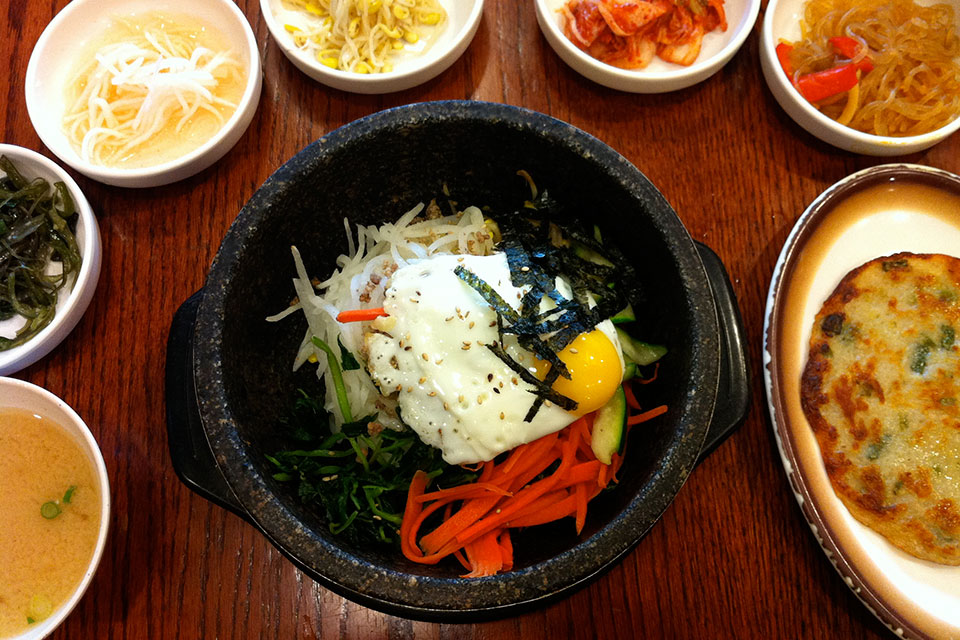
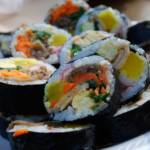
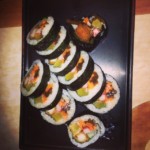
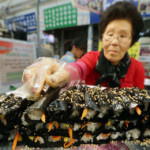
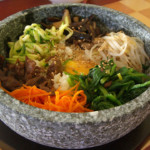
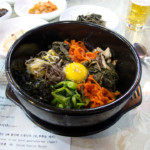
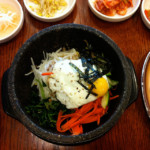
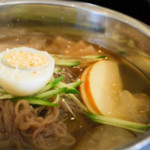
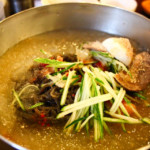
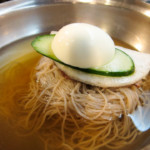
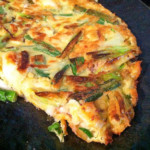
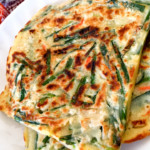
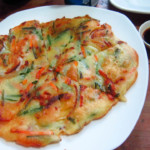
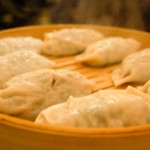
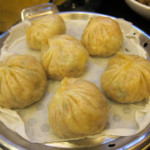
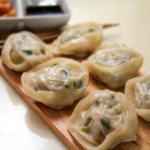



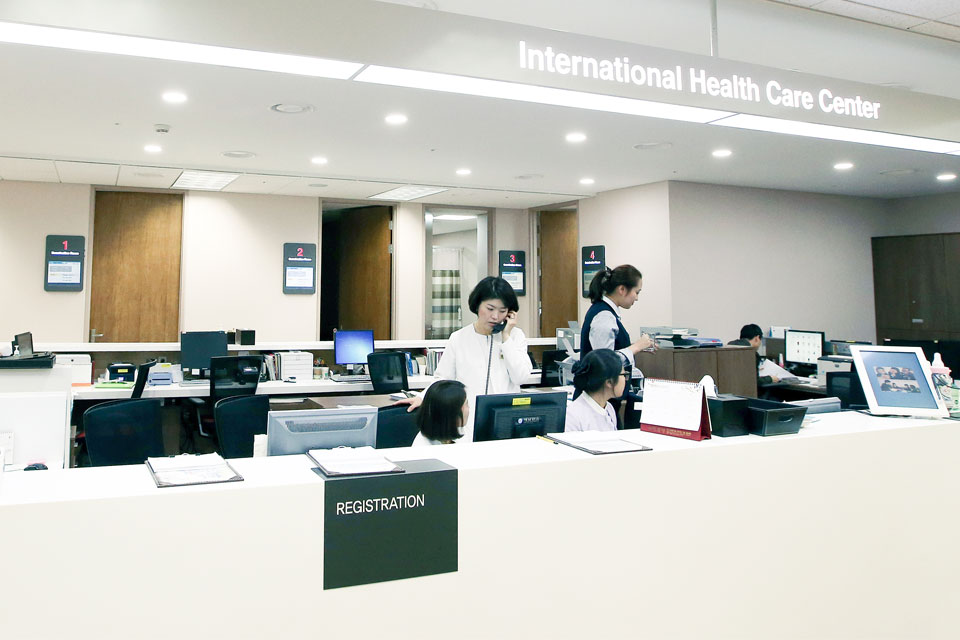

Leave A Comment